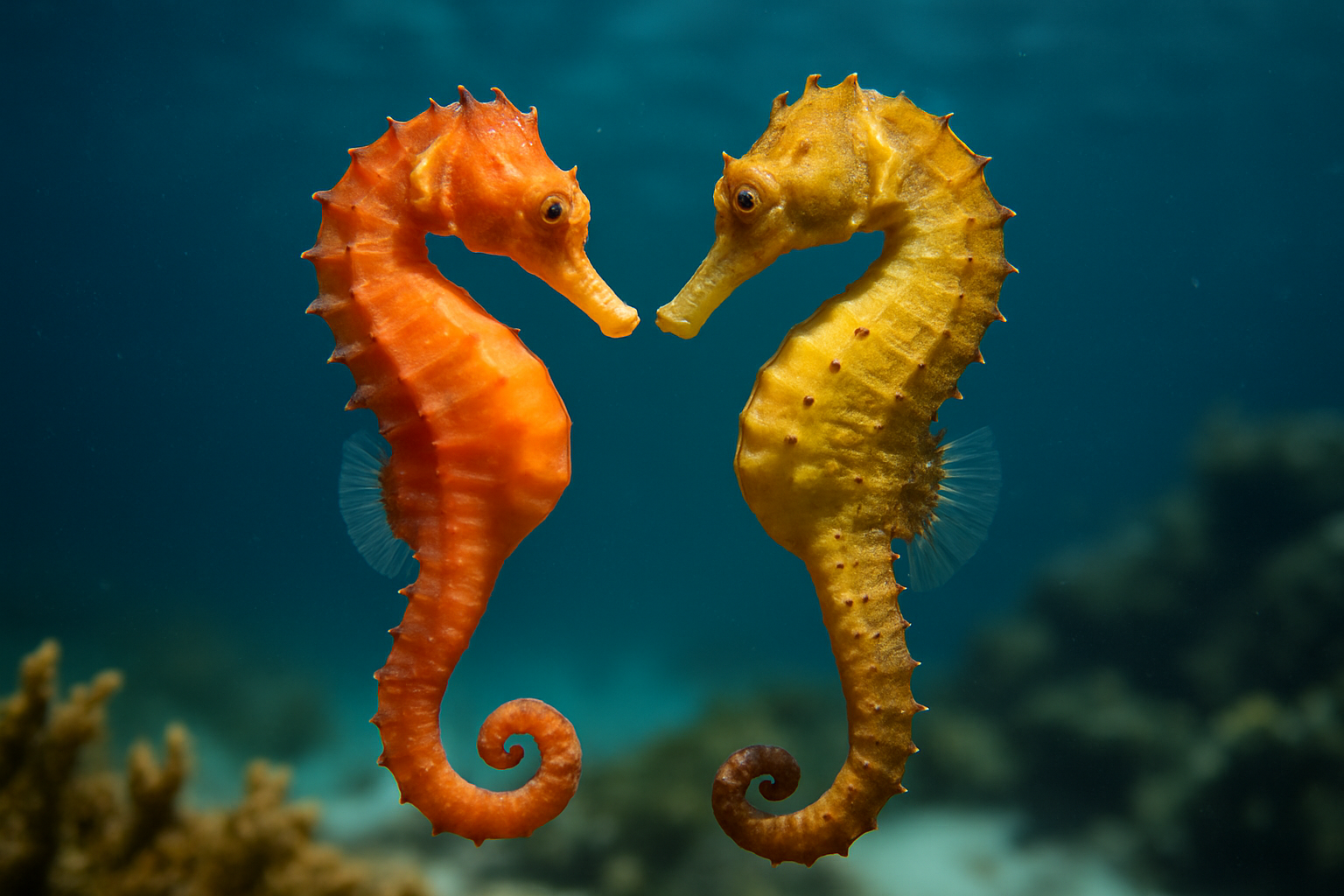Seahorse Husbandry: The Underwater Ballet of Home Aquariums
Delicate, enchanting, and utterly unique, seahorses captivate aquarium enthusiasts with their otherworldly charm. These fascinating creatures, with their horse-like heads and prehensile tails, have long been a source of wonder in the marine world. As the popularity of keeping seahorses in home aquariums grows, so does the need for understanding their complex care requirements and the challenges that come with maintaining these delicate creatures in captivity.

The Allure of Seahorses
Seahorses belong to the genus Hippocampus, which comprises approximately 46 species found in tropical and temperate waters worldwide. Their distinctive appearance, coupled with their unique reproductive process where males carry and give birth to the young, has made them a subject of fascination for centuries.
In the aquarium trade, popular species include the Dwarf Seahorse (Hippocampus zosterae), the Yellow Seahorse (Hippocampus kuda), and the Lined Seahorse (Hippocampus erectus). These species vary in size, color, and care requirements, but all share the need for specialized environments and diets.
Creating the Perfect Seahorse Habitat
Setting up a seahorse aquarium requires careful planning and attention to detail. Unlike many other marine fish, seahorses are poor swimmers and prefer calm waters with plenty of hitching posts. A typical seahorse aquarium should be at least 30 gallons in size, with a height of at least 18 inches to accommodate their vertical orientation.
Water parameters are crucial for seahorse health. They thrive in temperatures between 72-78°F (22-26°C), with a pH of 8.1-8.4 and a specific gravity of 1.020-1.025. Maintaining stable water conditions is paramount, as seahorses are particularly sensitive to fluctuations in their environment.
Hitching Posts and Aquascaping
One of the most critical aspects of seahorse husbandry is providing appropriate hitching posts. In the wild, seahorses use their prehensile tails to anchor themselves to seagrasses, corals, and other marine structures. In captivity, artificial corals, plastic plants, and specially designed seahorse hitching posts can serve this purpose.
When aquascaping a seahorse tank, it’s essential to create a balance between open swimming areas and plenty of hitching opportunities. Avoid sharp or abrasive decorations that could injure the seahorses’ delicate skin. Live rock and macroalgae can be incorporated to create a more natural environment and help maintain water quality.
Feeding Challenges and Solutions
Feeding seahorses in captivity presents unique challenges. In the wild, they are ambush predators, feeding primarily on small crustaceans. In aquariums, they require a varied diet of live or frozen foods, including enriched brine shrimp, mysid shrimp, and copepods.
Many seahorse keepers employ target feeding techniques, using pipettes or feeding stations to ensure each seahorse receives adequate nutrition. Some advanced hobbyists even cultivate their own live foods to provide a constant supply of nutritious prey for their seahorses.
Breeding Seahorses in Captivity
One of the most fascinating aspects of seahorse husbandry is the potential for captive breeding. The seahorse’s unique reproductive process, where males carry the developing embryos in a specialized brood pouch, has captivated scientists and hobbyists alike.
Successful seahorse breeding in captivity requires meticulous attention to water quality, photoperiod manipulation, and proper nutrition for both parents and offspring. Many dedicated hobbyists have developed specialized breeding setups, complete with separate nursery tanks for the vulnerable newborn seahorses, known as fry.
The Ethics of Seahorse Keeping
As the popularity of seahorse husbandry grows, so do concerns about the impact on wild populations. Many seahorse species are threatened in their natural habitats due to overfishing, habitat destruction, and collection for the aquarium trade. Responsible seahorse keeping involves sourcing captive-bred specimens whenever possible and supporting conservation efforts.
The estimated price range for setting up a seahorse aquarium can vary widely, from $500 to $5,000 or more, depending on the size of the tank, equipment quality, and the number of seahorses. This significant investment reflects the specialized care these creatures require.
Advancements in Seahorse Care
Recent developments in seahorse husbandry have focused on improving captive breeding techniques and developing specialized foods. Research into seahorse nutrition has led to the creation of gel-based diets that can supplement or replace live foods, making seahorse keeping more accessible to hobbyists.
Additionally, advancements in aquarium technology, such as specialized slow-flow pumps and precision temperature controllers, have made it easier to maintain the stable environments that seahorses require. These innovations have contributed to higher success rates in both keeping and breeding seahorses in captivity.
The Future of Seahorse Husbandry
As interest in seahorse keeping continues to grow, the hobby is likely to see further advancements in care techniques and equipment. There is also a growing emphasis on conservation, with many hobbyists participating in breeding programs aimed at reducing the pressure on wild populations.
The seahorse husbandry community is becoming increasingly interconnected, with online forums and social media groups facilitating the exchange of information and experiences. This collective knowledge is driving improvements in care standards and fostering a deeper appreciation for these remarkable creatures.
Seahorse husbandry represents a unique intersection of art and science in the world of aquarium keeping. It challenges enthusiasts to create miniature underwater worlds that not only sustain these delicate creatures but allow them to thrive and even reproduce. As our understanding of seahorse biology and care requirements continues to evolve, so too will the practices of those dedicated to bringing a piece of the seahorse’s enchanting underwater world into their homes.





